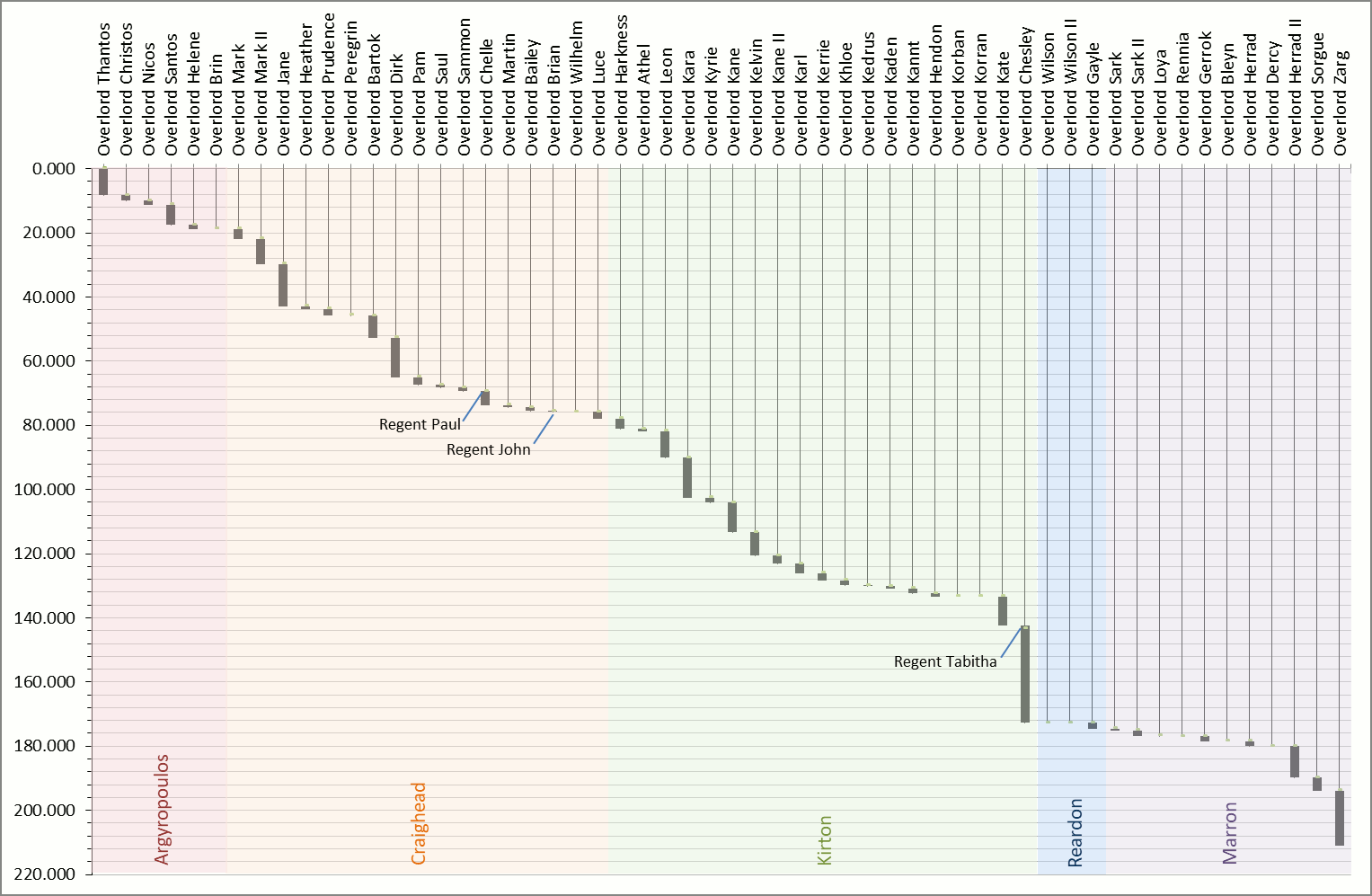Key
The child entries of this page are named in the form:
<sibling/spouse code><overlord number>.[Regent] Name [overlord numeral]
Sibling/spouse code – An alpha character that indicates order of siblings in a generation in English alpha order (eg A, B, C…). An ‘S’ code indicates a spouse, and may be preceded by the sibling’s code for disambiguation purposes.
Overlord number – a two-digit code indicating the number of a person who was an overlord. An entry without a number indicates an name heir or person of interest who was not an Overlord.
Regent – the word Regent before a name indicates the person accepted a position as Regent to an Overlord who was of below majority age.
Note on ‘Overlord Numerals’
‘Overlord Numerals’ are used to differentiate between Overlords (and Underlords) of the same name, as determined by the Codex. The ‘Overlord Numeral’ is a simple vertical line for the first Overlord of such a name, although its use is optional and only rarely seen, for example Overlord Sark I. A pair of vertical lines is used for the second Overlord of such a name, for example, Sark II. When counting backwards up generations, a – sign is sometimes used by custom, most notably in the example of Bleyn Marron -II, to distinguish between Overlord Bleyn I and his grandfather. The Codex provides a complete set of symbols that enable designation up to 3,999 Overlords, although the number 2 (II) is the only one used in practice (Underlords have counted higher.) If the average person in the corridor thinks about it at all, they usually believe that you just keep adding strokes for more Overlords, but this is not actually the case.
It is not known why the Codex specifies a separate counting system using unique symbols to differentiate between Overlords, but it does. Informally, the system is sometimes used in other families for the same purpose, although it is sometimes less clear who gets to be Family Member I.
Note on Scope
This list is not an exhaustive set of family trees, it includes only those who were:
- An Overlord
- A Regent
- An Overlordly Name-Heir (nominated or presumptive)
- A person passed-over as Name-Heir (generally only the next generation is shown where nomination changes the Overlordly House)
- A person whose appearance is necessary to show lineage to one of the above people
For example, Overlord Korban fathered nineteen children, but only three have relevance to the line of Overlordly succession and appear here.
Overlords
- 1. House Argyropoulos
- 2. House Craighead
- 3. House Kirton
- 4. House Reardon
- 5. House Marron
Overlordly Chronology Chart
